Android Central Verdict
Bottom line: The iPhone 12 combines a gorgeous design with the most powerful internal hardware you'll find on a phone today. You get a stunning OLED display, reliable cameras that shoot great photos in any lighting condition, IP68 water resistance, an innovative MagSafe wireless charging system, and five years of software updates.
Pros
- +
Vibrant OLED screen
- +
Class-leading A14 Bionic chipset
- +
Five years of software updates
- +
Reliable cameras
- +
MagSafe is an exciting addition
Cons
- -
No charger in the box
- -
Limited to 60Hz
- -
No USB-C
- -
Average battery life
Why you can trust Android Central
I know my way around an Android phone, but that is not the case with iPhones. I bought a few iPhones over the course of the last decade, but I just didn't spend enough time with iOS to feel comfortable using the platform.
That changed last year as I started using the iPhone 11 alongside my Android phone. What struck immediately the most was how easy it was to make the switch from Android to iOS — I didn't have to change the way I use my phone, and all the Google services I rely on every day, including Gboard, Maps, YouTube, Gmail, Drive, and Chrome, work just as well on iOS as they do on Android.
The two most dominant mobile operating systems are closer than ever in 2020. A key feature addition in iOS 14 is widgets — a mainstay on Android for a decade — and Google took a few features from Apple and added it to Android 11. Both platforms are mature and polished, and if you're like me and primarily use Google services, there's plenty to like in iOS.
That brings me to the iPhone 12. The phone has an interesting design, and Apple is focusing on 5G being the differentiator with its latest flagship. Of course, if you've used an Android phone in the last 18 months, you know that 5G isn't a new thing. But the fact that the iPhone 12 series now has 5G brings the standard into the public consciousness like few Android phones have managed to date. There's also a new MagSafe connector that relies on magnets, and a 5nm mobile chipset under the hood.
The iPhone 12 is now available for $799, and there are plenty of great Android phones at this price point. So let's find out what the iPhone 12 brings to the table, and how it holds up to its Android rivals.
Apple iPhone 12 Design

The iPhone 12 is a return to familiar ground in terms of the design, with the phone featuring a design aesthetic that's reminiscent of the iPhone 4 and iPhone 5. The edges are squared off and the flat front and back are very different to Android phones, which have coalesced around a metal-and-glass sandwich design with smooth flowing curves.
The iPhone 12 has squared off edges and a flat back, and it feels great to hold and use.
I switched to the iPhone 12 from the Galaxy S20 FE, and both devices could not be more different. The iPhone 12 is 26g lighter and considerably shorter than the S20 FE, making it easier to hold and use. The phone has a glossy back with a matte texture on the sides, and the blue color option I'm using is stunning.
Get the latest news from Android Central, your trusted companion in the world of Android
The rear camera design hasn't changed too much from last year, and you get a rectangular housing that includes the two camera modules and the LED flash. The housing itself doesn't protrude too much from the chassis, and there's little to no wobble when using the iPhone 12 on a flat surface.
The large notch at the front of the iPhone 12 feels antiquated, particularly next to the hole-punch cutouts that are a mainstay on Android phones in 2020. That said, the phone has thinner bezels than last generation, and the cutout holds the 12MP front camera, the 3D module for Face ID, and an earpiece that also doubles as a secondary speaker.
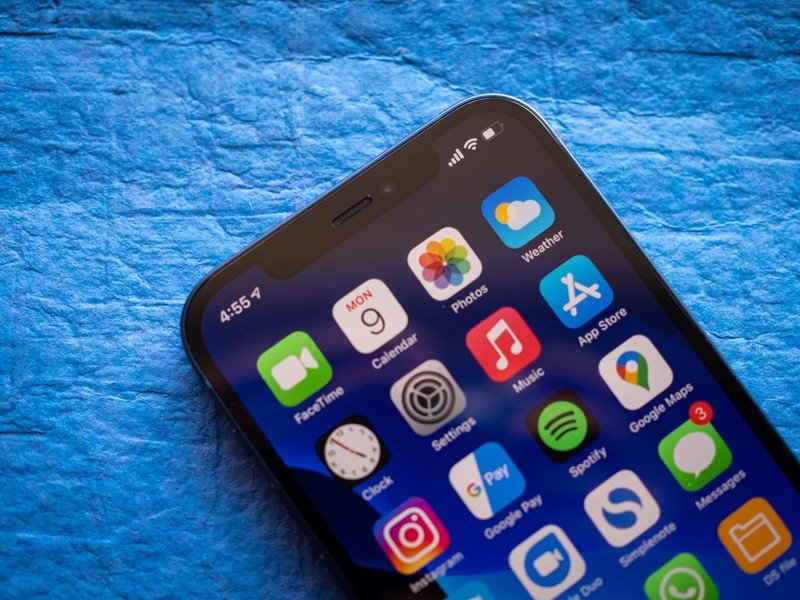

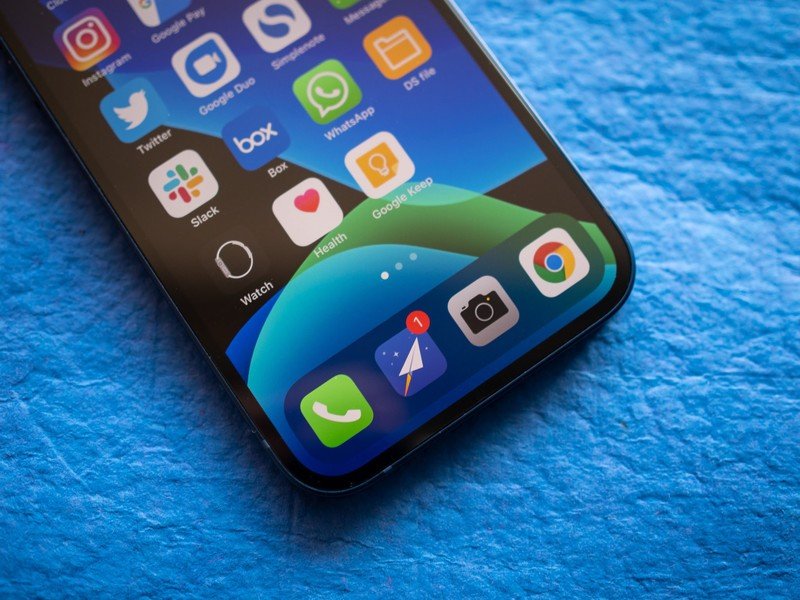
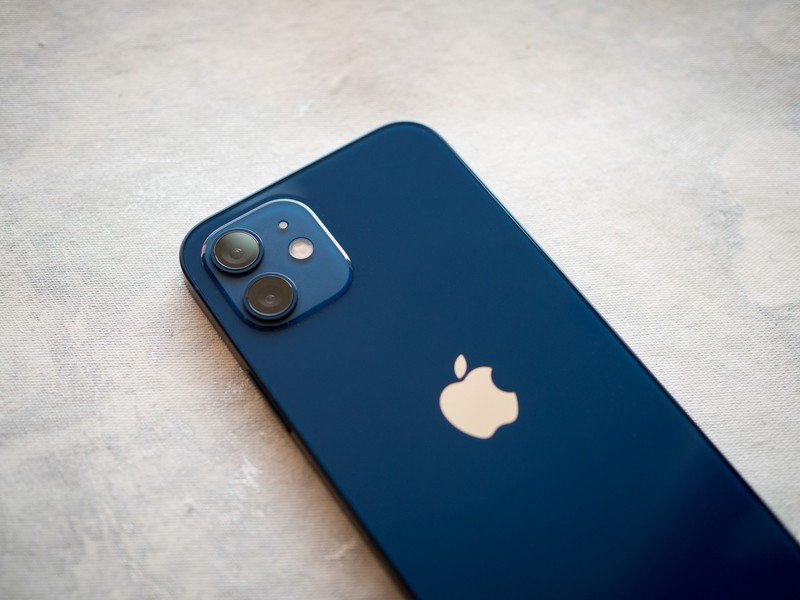

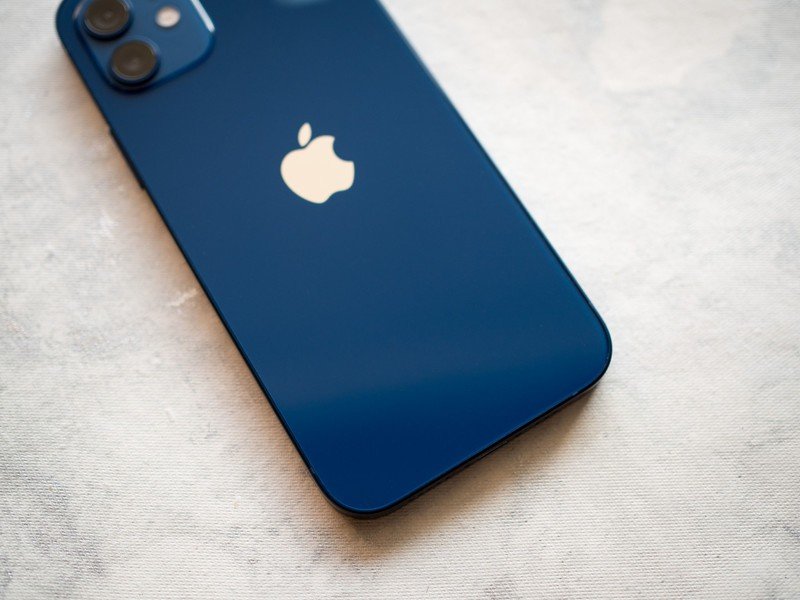
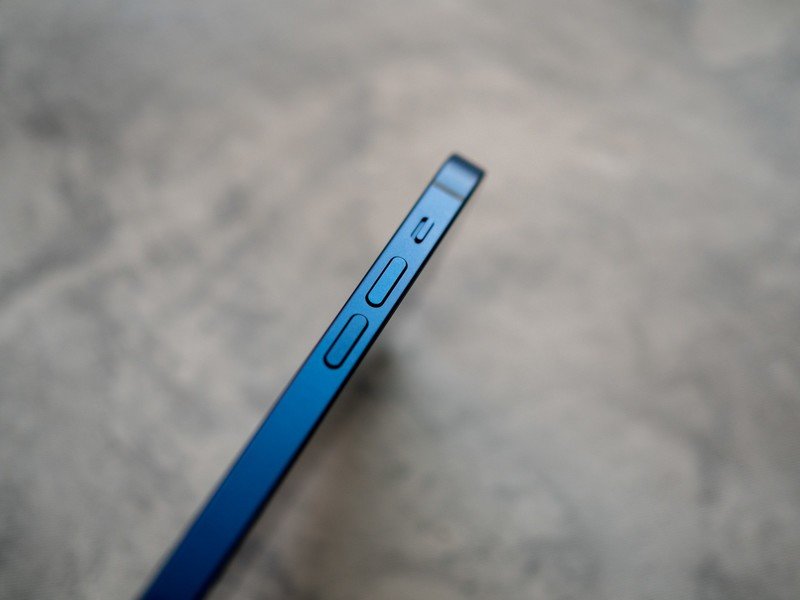
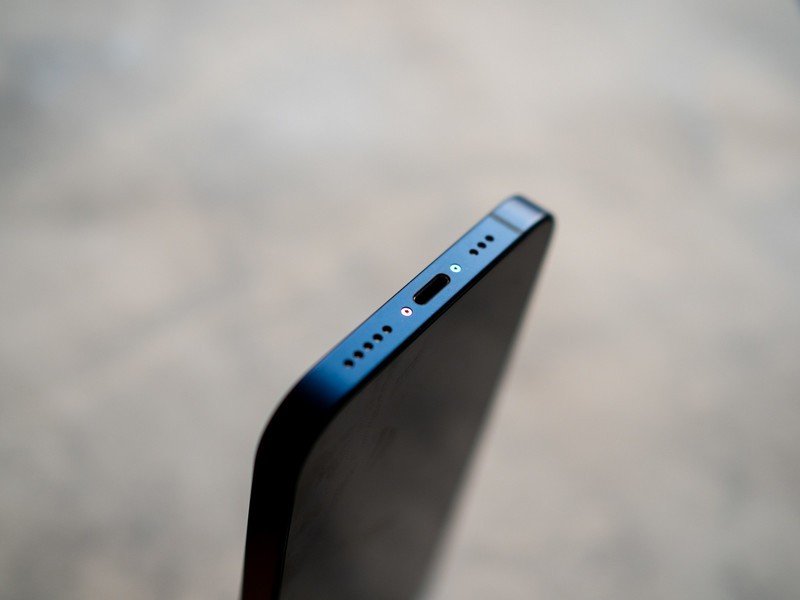
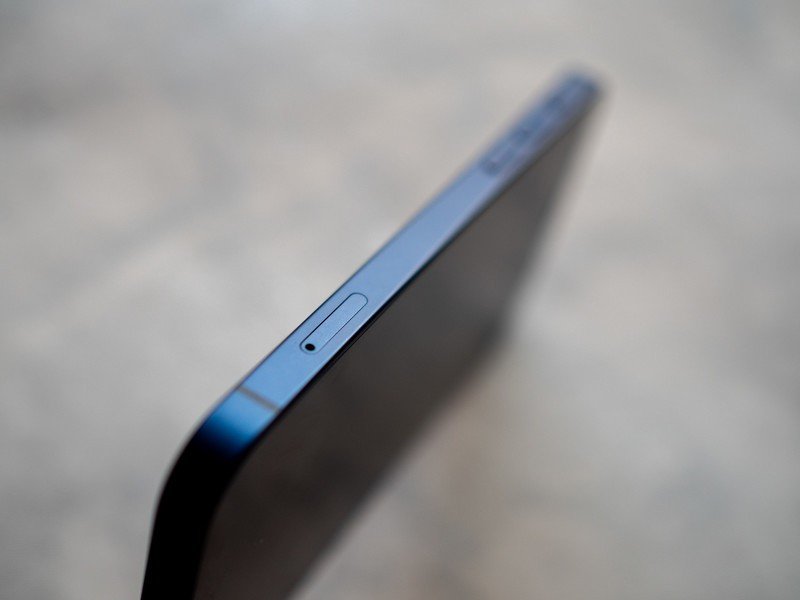
Another key change on the design front is the introduction of a new glass protection layer. The ceramic shield layer is the toughest glass ever used on a phone, and it covers the front of the iPhone 12. The layer is four times better at shatter resistance, but it has the same scratch resistance as the iPhone 11.
One point to note is that this toughened layer is only at the front, with the rear pane of glass offering the same protection as last year. It is still one of the most durable glass layers you'll find on a phone today — it's on par with Gorilla Glass Victus on the Note 20 Ultra.
Overall, I like the design of the iPhone 12. It is comfortable to use, the form factor is great for one-handed use, and the matte finish makes it easy to hold. The design feels like a throwback, and I am excited to see Android brands follow suit next year.
Apple iPhone 12 Display
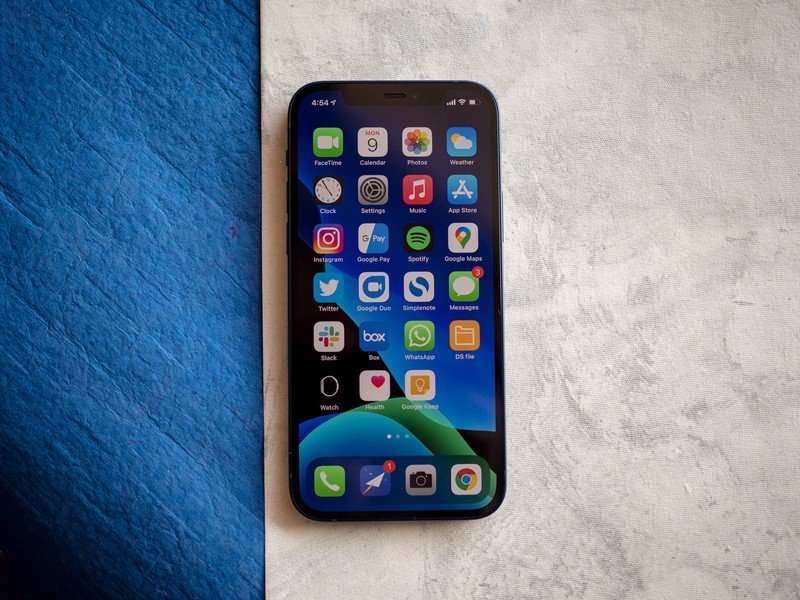
The iPhone 12 offers the same 6.1-inch screen size as its predecessor, but it now features an OLED panel. The screen resolution has also been increased to 2,532 x 1,170, and it now has a pixel density of 460ppi. The fact that the iPhone 12 is smaller and lighter than the iPhone 11 while offering the same screen size and a higher-res panel is an exciting change.
You miss out on 120Hz refresh rate, but this is one of the best OLED displays you'll find today.
That said, the refresh rate for the display is 60Hz and not 120Hz like the iPad Pro. It is likely we'll see high refresh rate panels make their way to the iPhone next year, with OLED being the key differentiator this time around. While it is a letdown to go back to a 60Hz panel from the 120Hz screen on the S20 FE, if you're upgrading from an older iPhone, you will love the screen on the iPhone 12.
The OLED panel itself is one of the best you'll find today, with excellent contrast levels and color accuracy. The iPhone 12 also offers HDR10 and Dolby Vision, and the stereo speakers combined with the OLED panel make it a joy to stream videos and play games on the phone.
Apple iPhone 12 Hardware
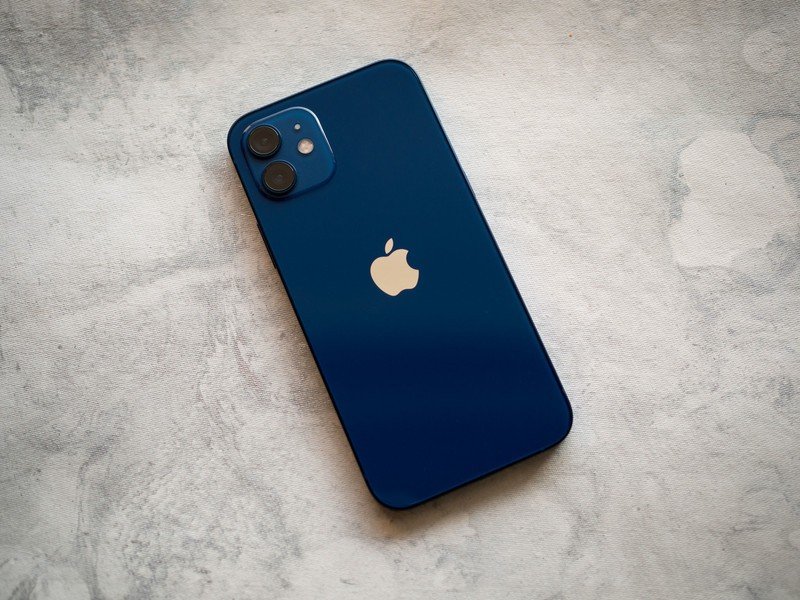
The marquee addition on the iPhone 12 is 5G connectivity. It is also the one feature that most users won't be able to use just yet. That's particularly true in most global markets, where 5G networks are just not ready for consumer use. Even in the U.S., while T-Mobile and Verizon have made strides in making 5G more accessible, the reality is that you don't find 5G coverage outside of select urban areas.
| Specs | Apple iPhone 12 |
|---|---|
| Software | iOS 14 |
| Display | 6.1-inch 60Hz OLED |
| Chipset | 3.1GHz A14 Bionic |
| RAM | 4GB |
| Storage | 64GB/128GB/256GB |
| Rear Camera 1 | 12MP ƒ/1.6 (primary) |
| Rear Camera 2 | 12MP ƒ/2.4 (wide-angle) |
| Front Camera | 12MP ƒ/2.2 |
| Connectivity | Wi-Fi 6, BT 5.0, NFC |
| Battery | 2815mAh, 20W |
| Security | Face ID |
| Colors | Black, White, Blue, Green, (PRODUCT)RED |
| Dimensions | 146.7 x 71.5 x 7.4mm |
| Weight | 164g |
Therefore, 5G shouldn't be the reason for switching to the iPhone 12. Sure, it will be usable a few years down the line once commercial 5G networks are widely available, but for now, there's little to no difference between 5G and 4G in real-world use. The feature is even more limited in countries like India — where 5G won't be a reality for at least two to three years.
There's one key difference between the iPhone 12 model that's sold in the U.S. versus global markets. The U.S. version has mmWave connectivity by standard, allowing the iPhone 12 series to connect to Verizon's 5G network. With most global carriers focused on Sub-6 for their 5G rollout, the global version doesn't include mmWave bands.
Now, even though 5G in its current state isn't very usable, its inclusion necessitated the design changes with the iPhone 12. Apple is using a Qualcomm X55 5G modem because it doesn't have a 5G modem of its own, and that means carving out additional room on the mainboard for the 5G chip. Combine that with the 5G antennae that are located on the sides of the phone, and you begin to understand why the iPhone 12 has a boxy design.
The 5nm A14 Bionic is currently the fastest mobile chipset in the world.
While 5G isn't something to be excited about right now, there's another hardware feature that makes a huge impact. The iPhone 12 is powered by Apple's 5nm A14 Bionic chipset. This is the first 5nm mobile chipset, and it delivers blistering performance in day-to-day use. The A13 Bionic in the iPhone 11 wasn't a slouch by any measure, but the A14 offers up to a 50% increase in performance across the board.
Machine learning is another area of focus with this generation, with the A14 Bionic offering 16 neural cores, double that of the A13. The neural engine is touted to be 80% faster for machine learning models and runs 11 trillion operations per second. The A14 Bionic has 11.8 billion transistors, and features two performance cores that go up to 3.1GHz along with four energy-efficient cores clocked at 1.8GHz. The GPU is similarly touted to be the fastest on a phone today.
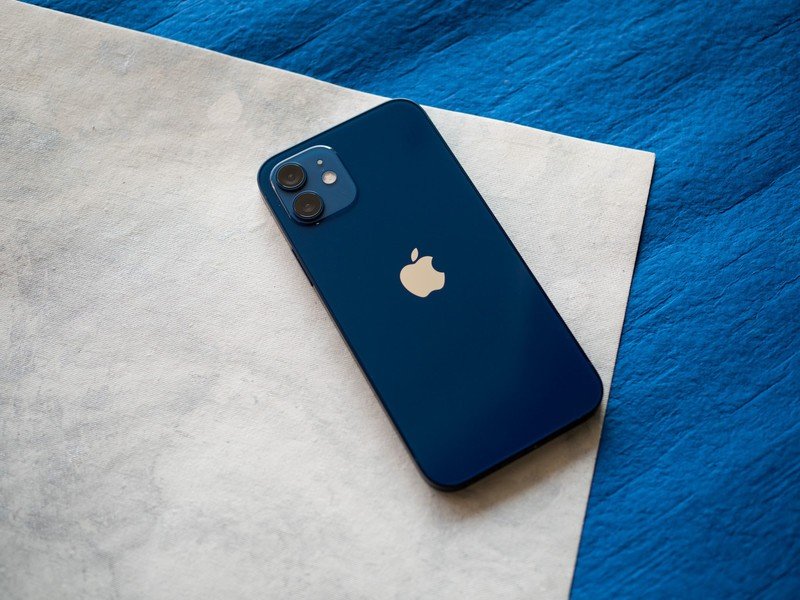
What that basically means is that the iPhone 12 is the fastest phone in the market today, and that will be the case for a while. Apple is in a unique position in the industry in that it controls the entire hardware stack, and that allows it to put the hardware gains to use like no other Android manufacturer today.
The iPhone 12 has zero issues in day-to-day use, and the phone handled anything I threw at it with ease. The big deal here isn't that the A14 Bionic is fast today; but that it will continue to be so even two or three years down the line, and that's what gives Apple a huge edge.
Continuing with the hardware theme, the iPhone 12 has 4GB of RAM, and the base variant has 64GB of storage. It's annoying to see that the base model has just 64GB of storage, with most Android phones in this segment now offering 128GB as standard.
The iPhone 12 has Wi-Fi 6, Bluetooth 5.0, NFC, and Face ID, and the facial authentication system is one of the best around. The phone also has IP68 water resistance, and this time it works at up to six meters for 30 minutes.
Apple iPhone 12 Battery life
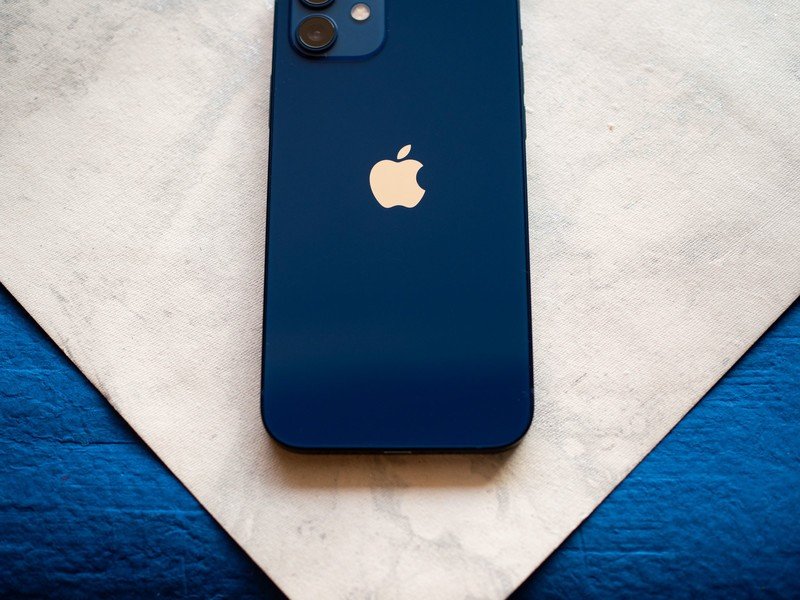
The iPhone 12 is the first phone to not come with a wall plug in the box — the retail packaging consists of just the phone and a USB-C to Lightning cable. While Apple says it ditched the charger and earphones for environmental reasons, that logic does not hold up when you consider that the phone charges over a Lightning port and not USB-C.
There's no charger or earbuds in the box, and the battery life itself is unchanged from last year.
Continuing with the Lightning port for another generation means Apple gets to license the port for one more year. So if you are considering upgrading from an older iPhone to the iPhone 12, you will have to pick up a USB-C charger that offers at least 20W charging. Thankfully, there are plenty of great USB-C chargers available in the market, and you can find one for as low as $17.
Apple ditching the charger and earbuds from the iPhone 12 packaging paves the way for Android manufacturers to do the same next year. Samsung was already considering the move back in July, so it is feasible the Galaxy S21 won't include a charger in the box.
As for the battery life itself, the 2815mAh battery on the iPhone 12 manages to last all day on a full charge. Apple didn't make any meaningful strides in this area from last year, but the shift to the 5nm node allowed the company to deliver the same battery life even while reducing the battery size by 10%.
MagSafe
The iPhone 12 charges at 20W over USB-PD, but the bigger deal this year is 15W wireless charging that's achieved via MagSafe. The back of the iPhone 12 has magnets which the MagSafe wireless charger relies on to get a secure fit, and Apple is introducing an entire ecosystem of MagSafe-compatible cases and accessories with the iPhone 12.
MagSafe is an incredibly cool way to charge the iPhone 12, and it works exceedingly well. You can use a regular Qi wireless charging mat to charge the iPhone 12 wirelessly, but those are limited to 7.5W.
The iPhone 12 takes nearly 90 minutes to hit a full charge when using a wired 20W USB-PD charger, and while that's considerably longer than most Android phones, you do get up to a 50% charge in 30 minutes and 85% in 60 minutes. MagSafe obviously takes longer, but it is an interesting new way to charge the iPhone.
Apple iPhone 12 Cameras

The iPhone 12 doesn't differ too much from its predecessor when it comes to imaging. There's a 12MP f/1.6 primary lens that's joined by a 12MP f/2.4 wide-angle module, and you'll find a 12MP camera at the front.
Apple is turning to machine learning to deliver better photos with the iPhone 12.
Apple is leveraging the prowess of the A14 Bionic to take better photos in just about any lighting scenario. Smart HDR is now in its third iteration, and the scene recognition algorithms have been optimized to adjust white balance and saturation levels so that you get great shots at any time of day.
Machine learning is an integral part of the iPhone 12's camera, and the feature powers Night Mode, sky segmentation so you get a vibrant shot even with grey clouds, and Deep Fusion tech.
The camera interface itself is unchanged from iOS 13; you can switch between modes with a swipe gesture and there are toggles for flash, timer, and the camera lenses.
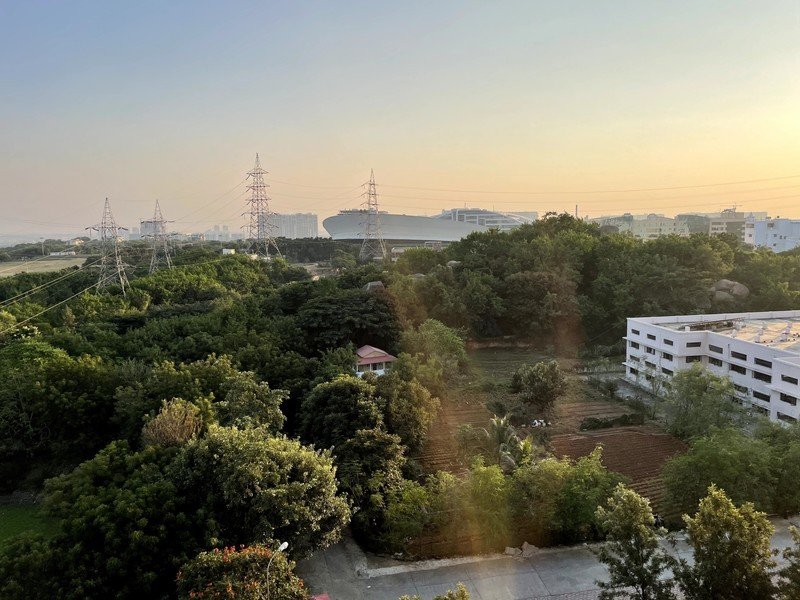
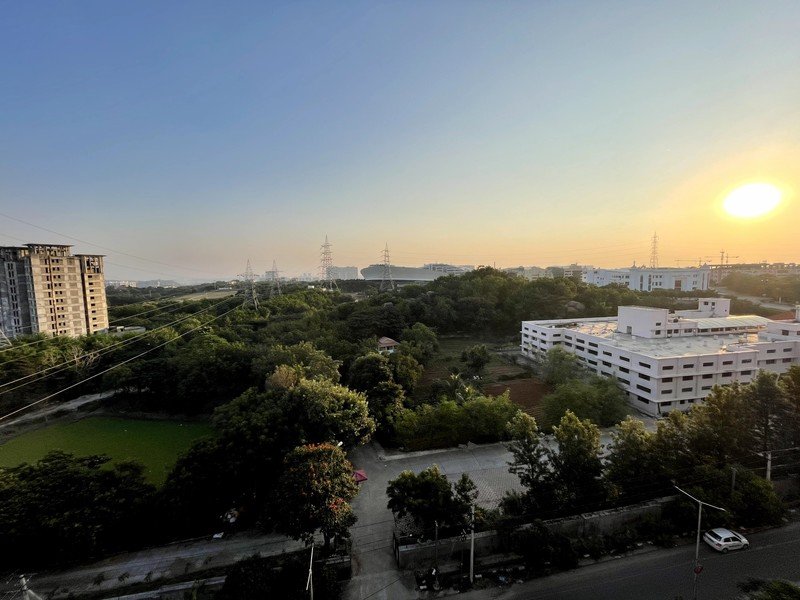
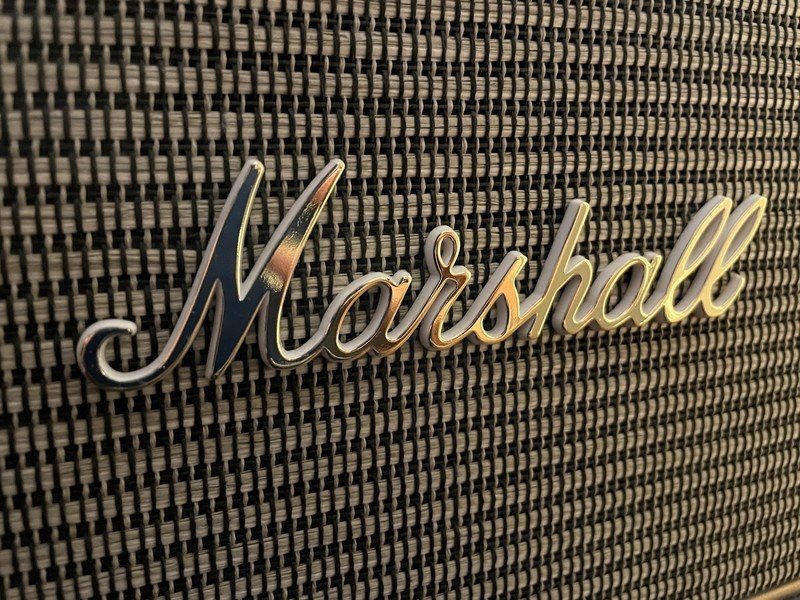
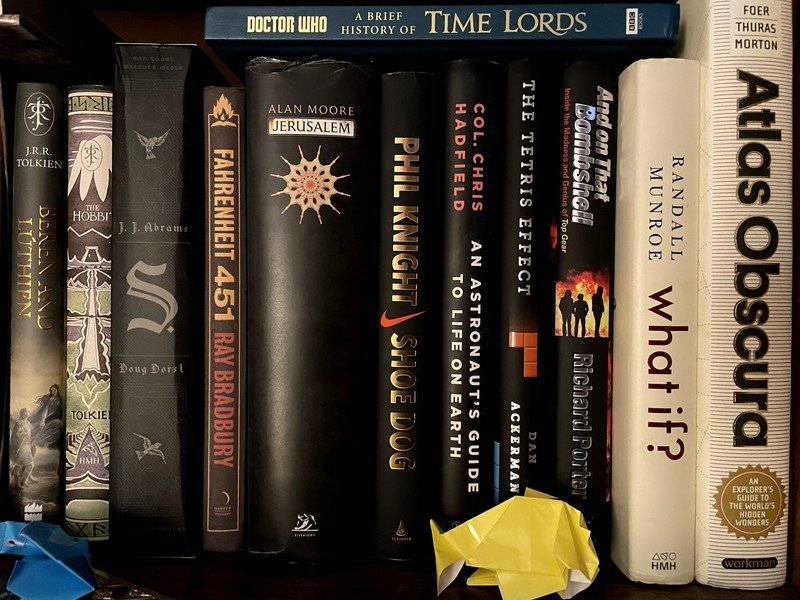



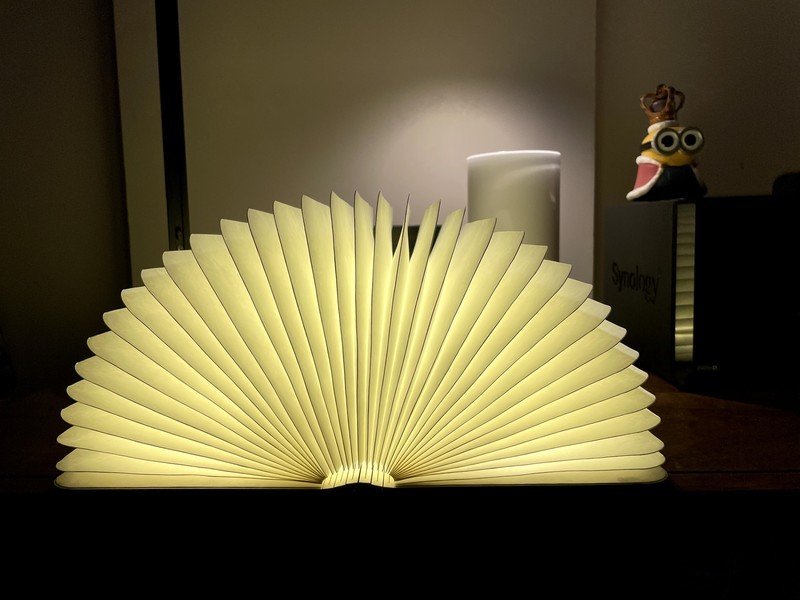
The iPhone 12 takes fabulous photos in daylight conditions, with great dynamic range and accurate colors. The resultant images aren't as saturated as you'd find on a Samsung phone, and you get plenty of detail. The wide-angle lens does a great job as well, but you start to see graininess around the edges of the frame.
The phone also holds up incredibly well in low-light scenarios. Night Mode is better than ever before, and even in regular mode the photos have minimal noise and great colors. I still prefer Google's portrait mode — particularly for shooting inanimate objects — but the iPhone 12 offers a great all-round package. Video recording is another segment where the iPhone has a clear advantage over its Android rivals, and the iPhone 12 raises the bar once again.
Apple iPhone 12 Software
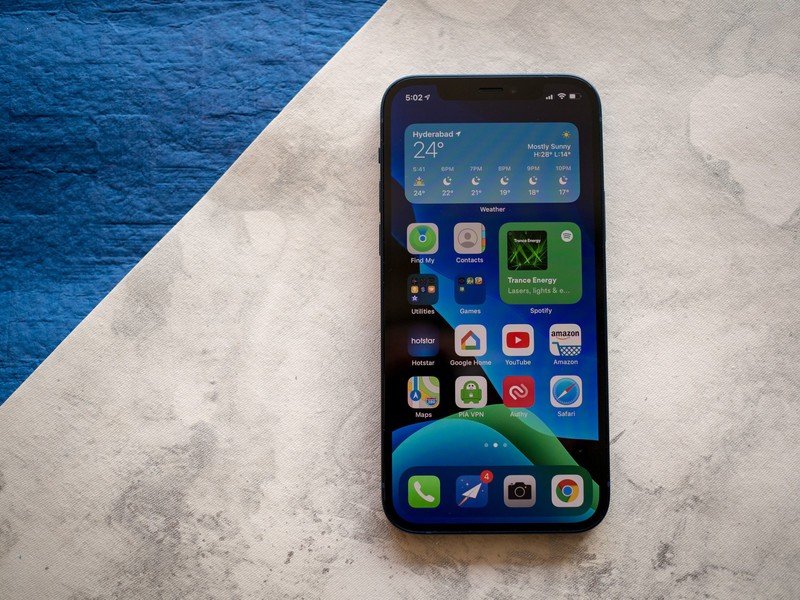
The iPhone 12 runs iOS 14.1 out of the box. iOS 14 does not deviate from its predecessor from a user interface point of view, but it does get a few noteworthy additions, including widgets, app drawer, picture-in-picture, and the ability to change the default browser and email client.
iOS is a great platform — regardless of whether you use Apple, Google, or Microsoft services.
That last point is particularly useful for me as I use Chrome for browsing, and it is great to finally be able to set Google's browser as the default option in iOS. This is what I've come to like about iOS as a platform. I don't use a lot of Apple services, and that doesn't hinder the overall experience whatsoever.
For instance, I use Google Drive to back up files, Google Photos to back up photos, Google Maps for navigation, Gboard as my primary keyboard, Google Home to control all the smart home devices in my home, Google Keep for to-do lists, and Google Duo for video calls. All of these services work flawlessly on iOS, and I don't feel like I'm missing out on anything when compared to Android.
In terms of features, iOS is on par with Android — you'll find a system-wide dark theme, navigation gestures, granular privacy controls, and now widgets. The ability to use widgets and clean up the home screen by using App Library is a huge deal, and it makes iOS feel just that little bit more familiar.
But what makes iOS truly stand out against Android is the software update longevity. The iPhone 12 will receive at least five years of software updates, and while Google and Samsung are doing better in this regard, Apple is the runaway leader. Sure, you may not be interested in using the same phone for five years, but even after two or three years the iPhone 12 should be just as fast and fluid as it is today. Vertical integration is a wonderful thing.
Apple iPhone 12 The competition
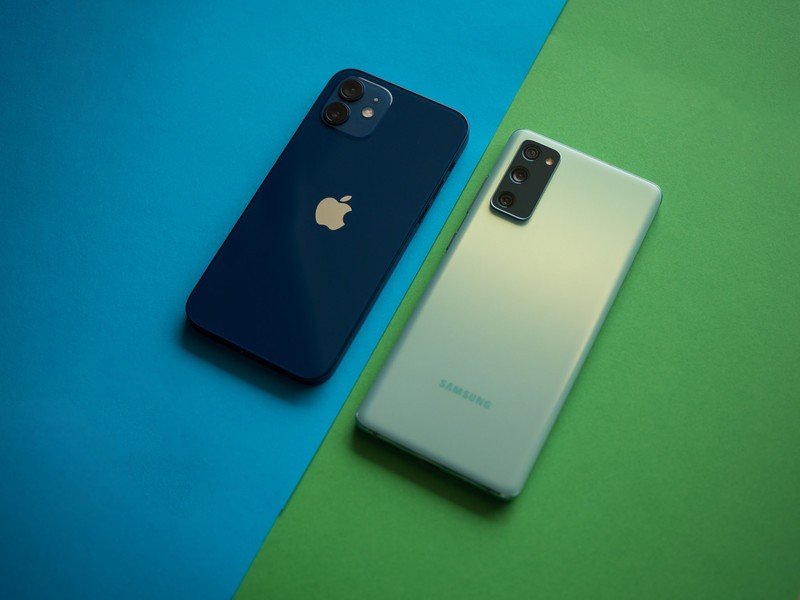
Android manufacturers have introduced a lot of exciting phones in 2020, and if you're in the market for a new phone, the Galaxy S20 FE is a great candidate. The phone has a 120Hz AMOLED screen, is powered by the Snapdragon 865 chipset and has 5G connectivity, the same 12MP camera as the standard Galaxy S20, a massive 4500mAh battery with 25W fast charging, and 15W wireless charging. The fact that the Galaxy S20 FE is available for $699 on Amazon, or $100 less than the iPhone 12.
Then there's the OnePlus 8T. The phone runs Android 11 out of the box and has the latest hardware available, including a 120Hz AMOLED screen, Snapdragon 865, 4500mAh battery with insane 65W fast charging, and a 48MP camera at the back. The camera doesn't measure up to the iPhone 12, but if you want a gorgeous design with the latest internal hardware, the 8T has a lot to offer for $749.
The Pixel 5 is also a great alternative. The phone is powered by a Snapdragon 765G chipset and has 5G connectivity, and you get the best camera on Android right now. The imaging module itself hasn't changed by a lot in the last three years, but Google continues to rely on its software prowess to deliver outstanding shots. The Pixel 5 also has a 90Hz OLED panel, a wide-angle lens at the back, wireless charging, and IP68 water resistance. Like the S20 FE, the Pixel 5 costs $699 on Amazon.
Apple iPhone 12 Should you buy?

You should buy this if ...
You want the fastest phone today
The A14 Bionic is an absolute beast, and it is unchallenged right now. Qualcomm's answer to the chipset won't be available at least until the Galaxy S21 shows up in January 2021, so if you want the best performance, the iPhone 12 is the phone to get.
You want five years of updates
Android manufacturers have gotten better at delivering updates, with Pixels and Samsung flagships offering three years of platform updates. But the iPhone 12 will get at least five iOS updates, giving it a clear edge in this category.
You want a hassle-free phone
iOS is a mature platform, and Apple's vertical integration means you won't find any bugs or glaring issues here.
You should not buy this if ...
You want a phone with a high refresh rate
The iPhone 12 has a great OLED panel, but you miss out on 90 or 120Hz refresh rate. If you want a device that has a 120Hz panel, the Galaxy S20 FE is a better bet.
You're looking for the latest charging tech
MagSafe is an intriguing idea, but the iPhone falls behind when it comes to charging tech. The OnePlus 8T has 65W wired charging, and the OnePlus 8 Pro delivers 30W wired and wireless charging. The fact that you don't even get a charger in the box with the iPhone 12 is a glaring omission.
Over the years, Apple has done a magnificent job highlighting that specs don't really matter in day-to-day use. The iPhone 12 has 4GB of RAM, and if this were an Android device, I would automatically disqualify for not offering enough memory.
But the iPhone 12 — as is the case with all iPhones — is more about delivering a great experience than focusing on cutting-edge hardware. Don't get me wrong; there are a few areas where the iPhone 12 absolutely demolishes the Android competition. Apple's A series chipsets continually deliver better performance than anything that Qualcomm, Samsung, MediaTek, and HiSilicon have to offer, and that's still the case with the A14 Bionic.
4.5 out of 5
Yes, the iPhone 12 misses out on a 120Hz display, and the charging tech lags behind Android rivals. But MagSafe is an interesting addition that will turn into yet another lucrative revenue stream, and if you're upgrading to the iPhone 12 from an older iPhone, you won't mind the 60Hz panel. For what it's worth, the OLED screen itself is gorgeous, and one of the best in this category.
If you're considering a switch to the iPhone 12 from your current Android phone, know that there's little to no friction in transitioning over. You're getting reliable hardware, rock-solid performance, and five years of software updates. If you're already using an iPhone and are thinking of an upgrade, the iPhone 12 has plenty to offer. It makes little sense to get the iPhone 12 if you're using the iPhone 11, but if you are on the iPhone X or older, you will love the new features.
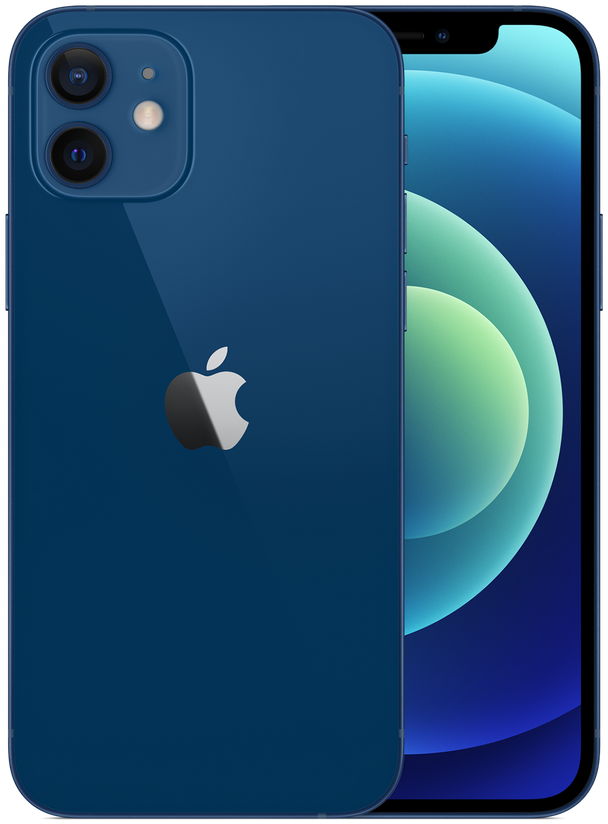
Apple iPhone 12
Bottom line: The iPhone 12 comes in a form factor that's easy to use one-handed, and you get one of the best OLED screens available today. Combine that with incredible hardware, 5G connectivity, stellar cameras, a new wireless charging system, and five years of software updates, and you get a great overall package.

Harish Jonnalagadda is Android Central's Senior Editor overseeing mobile coverage. In his current role, he leads the site's coverage of Chinese phone brands, networking products, and AV gear. He has been testing phones for over a decade, and has extensive experience in mobile hardware and the global semiconductor industry. Contact him on Twitter at @chunkynerd.

